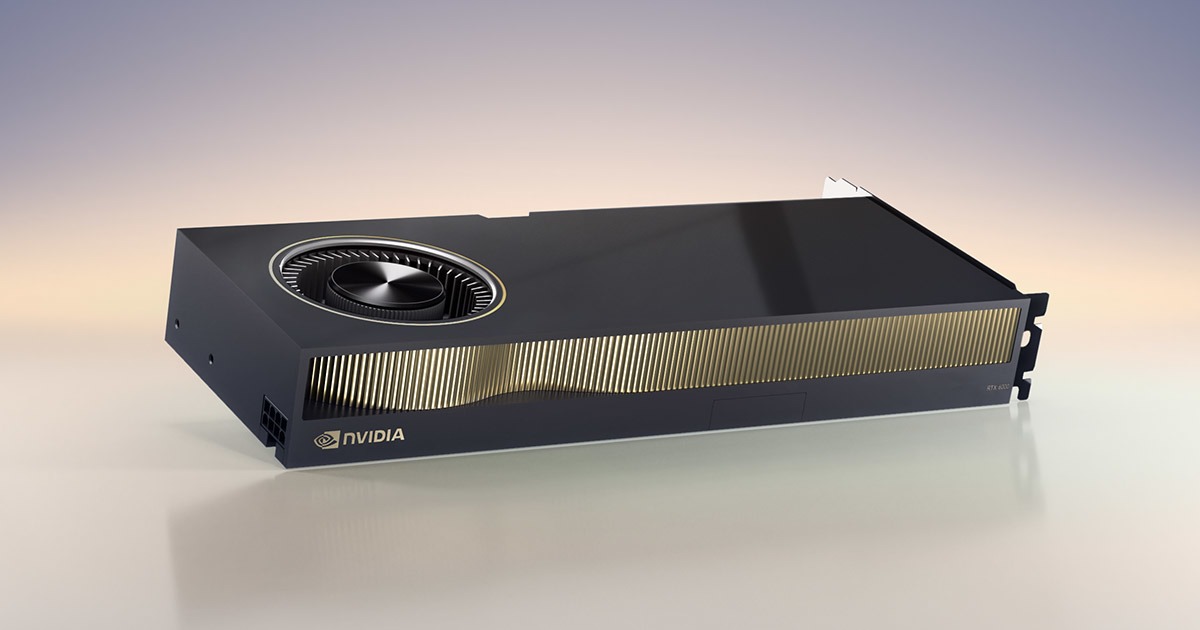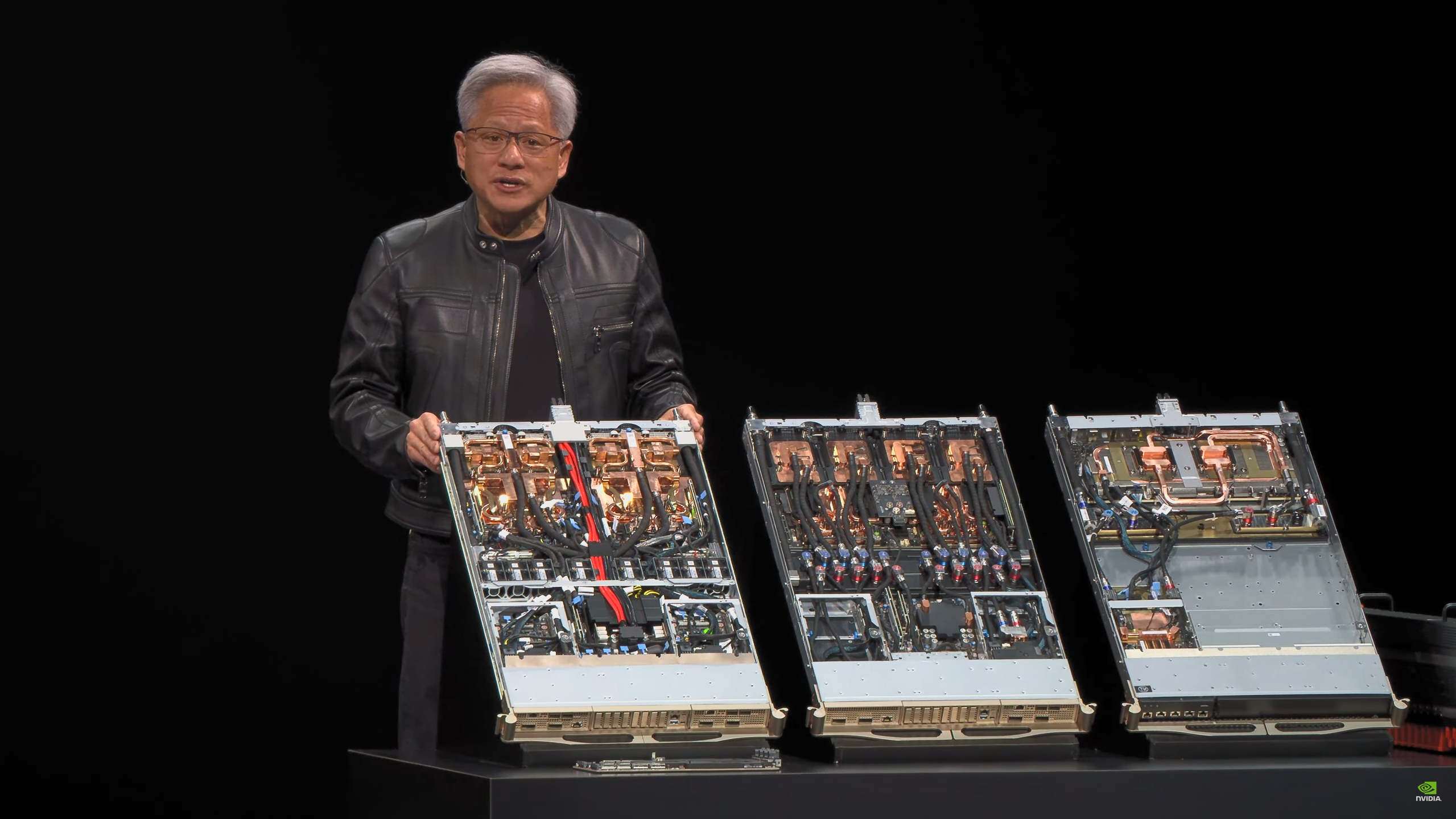Nvidia reportedly preparing RTX 6000D for Chinese market to comply with U.S. export controls — fabricated on TSMC N4, featuring GDDR7 memory capable of delivering 1,100 GB/s of bidirectional bandwidth

After months of regulatory hurdles and revenue fallout, Nvidia is poised to initiate a bold comeback in China with its upcoming RTX 6000D—a strategically modified Blackwell-based GPU designed to satisfy current export controls and restore lost market share. According to DigiTimes, the company plans to begin shipping the card in Q3 of 2025, with an ambitious target of 1-2 million units by year-end, aiming to recoup over $10 billion in faltering revenue.
This news stems from Nvidia CEO Jensen Huang’s third visit to China in 2025 that he made yesterday, a highly symbolic gesture amidst the ever-growing U.S. scrutiny. He reportedly used the visit to personally present the RTX 6000D and other compliant AI solutions to key Chinese partners, signaling both goodwill and urgency. The Trump administration recently orchestrated a deal with China, trading chip design exports for rare earth materials, so there's potential for de-escalation, but bleeding-edge semiconductors are a hard line to cross.
As such, the newest addition to the China-only lineup of GPUs is the RTX 6000D, different from the RTX PRO 6000D that's also in the works. It's built on TSMC’s 4nm process node, features GDDR7 graphics memory with around 1,100 GB/s bidirectional bandwidth, and boasts a design aimed at approaching HBM-class performance—all while staying within current U.S. export regulations. However, concerns still linger around GDDR7 supply constraints, which could limit production in the second half of 2025 when the card is supposed to launch, claimed DigiTimes.

Nvidia's move is a direct response to the major financial drag it's faced since President Trump took office. In the fiscal year 2025, China (including Hong Kong) generated over $17 billion in revenue, around 13% of the company's total revenue. But export bans on chips like the H20, A800/H800, and high-end gaming cards like RTX 4090, and even 5090D have driven China’s revenue share down to less than 5%, costing NVIDIA an estimated $4.5 billion in impairments and $2.5 billion in lost revenue recognition. That being said, just hours ago, Nvidia was given approval to sell its H20 GPUs in China again, so ground is already being recovered as we speak.
Nevertheless, the RTX 6000D replaces the earlier RTX 5090D, which seems to have faced the same export ban in China, and may now take its place alongside the H20 and the upcoming RTX 5090D V2 in Nvidia’s present China portfolio. The card has fresh industry buzz thanks to Huang’s visit and the promise of millions of units ready for distribution, assuming memory supplies hold up.
Market analysts also note that, although domestic companies like Huawei and Cambricon are racing to develop China's AI capabilities, they remain bottlenecked by SMIC's older processes, high costs, and lack of software ecosystem parity with CUDA. That puts Nvidia at a distinct advantage, with the RTX 6000D now playing a critical role. Jensen has called the current administration's stance on export control "a failure" before, so it's no surprise that he wants to ramp up deliveries in China, a region where even its nerfed GPUs sell well.
If successful, the RTX 6000D rollout could restore Nvidia’s footing in a critical market after months of disruption, something that AMD already seems to be on track on. It also underscores the tight intersection between geopolitics, chip manufacturing, and AI infrastructure. As it stands, whoever controls the best chips controls the world, and right now, those are needed to satiate the AI boom. Therefore, the U.S. government keeps tightening the screws on China to force them to stay behind, despite the leather-jacket-clad CEO saying otherwise.
Get Tom's Hardware's best news and in-depth reviews, straight to your inbox.
Follow Tom's Hardware on Google News to get our up-to-date news, analysis, and reviews in your feeds. Make sure to click the Follow button.

Hassam Nasir is a die-hard hardware enthusiast with years of experience as a tech editor and writer, focusing on detailed CPU comparisons and general hardware news. When he’s not working, you’ll find him bending tubes for his ever-evolving custom water-loop gaming rig or benchmarking the latest CPUs and GPUs just for fun.
-
John Nemesh I am 100% sure Nvidia's greed won't turn around and bite us in the ass in a few years. Surely the Chinese are just using this for civilian purposes and not some dark military purpose that will kill US soldiers. Surely.Reply